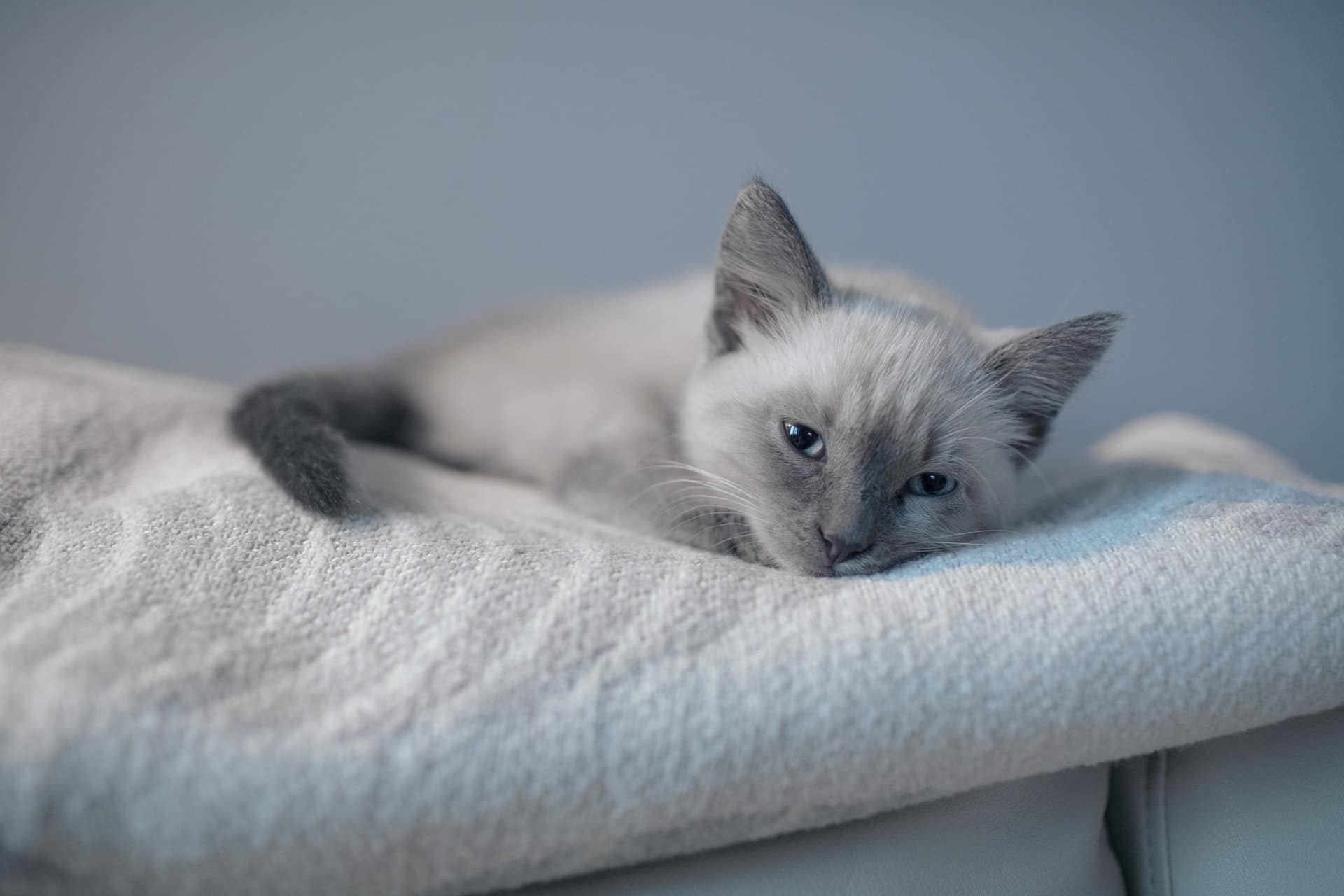
Siamese cats have more sensitive skin than other cat breeds, which is a typical concern. These skin diseases can be a big pain for your cat, so learn what you can do to help them feel better and treat their skin problems. In this post, we will explain what causes these bothersome skin problems in Siamese cats and how to recognise them.
Not only the Siamese cat, but all cats are careful groomers that strive to keep their fur and skin as clean as possible. Cats, in fact, spend roughly half of their waking time cleaning themselves. Your Siamese cat will certainly groom itself frequently, but this does not necessarily indicate that she has a skin problem. It could simply signify that she wants to feel clean. If you see problems beneath your cat’s fur, thinning fur, or frequent grooming, you can check the skin condition.
Keep in mind that if you notice fur throughout the house, it could simply be due to the Siamese cat’s normal shedding. Although Siamese cats are known for their low shedding due to their shorter coats, they do shed seasonally, so you may notice more fur around the house throughout the autumn and spring months.
One thing to keep in mind while caring for cats, not just Siamese cats, is that there are very few skin problems that your cat may pass on to you. However, there are still one or two that you should know about and recognize the signs of. When it comes to diseases that can be contracted from another species and spread to humans, zoonotic diseases are the most common, and when it comes to the skin of a Siamese cat, the most common illness is Scabies, which is a parasite infection. If you develop Scabies, there is a strong possibility your Siamese cat may have it as well. Aside from Scabies, most skin conditions that your Siamese can get will not spread to you, so you do not have to worry about acquiring something by handling the cat.
Siamese cats are not more susceptible to skin disorders than other cats in general, but all cats are vulnerable to these conditions if no proper care is taken. A Siamese cat’s fragile coat requires grooming by both the cat herself and their caretaker in order to maintain optimal health, and if you disregard the grooming that your physician recommends because you believe the cat can groom itself, you may end up with a cat with a variety of skin problems.
See also: Long Haired Grooming Tips for Siamese Cat
The sensitive stomachs of Siamese cats are well-known. As a result, they may be unable to eat the meals required for a complete and healthy immune system. Because its body lacks the resources it needs to battle infections or other disorders, your Siamese cat is significantly more prone to pick up an illness or irritation when this happens. Furthermore, Siamese cats are significantly more susceptible to respiratory and heart problems, all of which can affect a cat’s ability to groom itself. This increases the likelihood of the Siamese cat developing a skin problem, and some of the illnesses to which it is predisposed may manifest as symptoms of sensitive skin. Siamese cats, on the other hand, have generally healthy skin. It’s just that their systems don’t always have the resources they need to fight off skin infections and disorders, either because they don’t always eat a balanced diet tailored to their needs or because their bodies are preoccupied with fighting off an illness in a more critical area of the body.
You need to take extra care as a Siamese cat owner to maintain your cat’s skin healthy. This usually entails grooming your cat as meticulously as your cats, providing additional resources for the skin if you take your cat outside, and devoting more time during the day to evaluate your cat’s skin for potential problems so that you may address them before they become serious problems. To do so, you will need a strong understanding of the signs of sensitive and irritated skin in Siamese cats, as it can be difficult to recognise in creatures with as much fur as cats.
It’s obvious that identifying the health of your Siamese cat’s skin might be hard, particularly when the skin is covered under thick hair that Siamese cats are known for. Fortunately, some parts of your cat’s fur are much thinner than others, letting you to get a good idea of the overall health of your cat’s skin.
Some warning signs to look out for are if you feel a knot, scratch, or see inflammation and redness on your cat’s skin.
Food allergies are common in animals, and they can cause red spots or pimples on their faces, ears, and bodies. You can try switching to a grain-free brand of food. However, if you believe the problem is too hazardous to wait, it’s always better to take them to a doctor to make sure it’s just an allergy and not something more serious. See also: Does Your Aging Cat Need a New Diet
Of course, all cats are lazy compared to humans. Siamese cats, on the other hand, are extremely athletic and should be following you from room to room. If they appear to be lazy, fatigued, or not moving about enough, you should investigate whether something internal is hurting their productivity.
Refusing to eat – this is never a good indication, and you should take them to the vet by day two to make sure everything is okay. Furthermore, most veterinarians advise against feeding your Siamese a wheat-rich diet, as this may be the cause of their leaky stomach or other digestive problem.